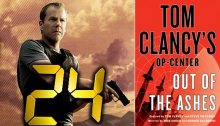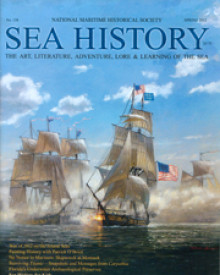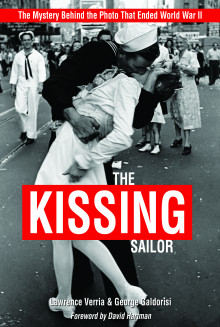
The premier book review medium, Publisher’s Weekly, had this to say about Tom Clancy Presents: Out of the Ashes, just out this week:
Fans of the original Op-Center series created by Tom Clancy and Steve Pieczenik that ended with Jeff Rovin’s War of Eagles (2005) will welcome this solid continuation from Couch (SEAL Team One) and Galdorisi (Coronado Conspiracy). The original Op-Center, “an information clearinghouse with SWAT capabilities,” fell under the budget ax and was disbanded, but after a horrific series of bombings at four NFL stadiums, U.S. president Wyatt Midkiff decides to dust off the Op-Center file and bring the group back to life. Chase Williams, a retired four-star Navy admiral, agrees to head the new center and hunt down the terrorists responsible for the devastating attack. The trail takes the men and women of the revitalized agency into the Middle East, where they find a new plot aimed at the American homeland. This thriller procedural packs plenty of pulse-raising action. The open ending promises more to come. Agent: Mel Berger, WME.
More reviews on Amazon here

Tom Clancy’s complex, adrenaline-fueled military novels spawned a new genre of thrillers and made him one of the world’s best-known and best-selling authors. When Clancy died in October of last year, one of the most celebrated authors of our generation no longer walked among us.
Many people had – and continue to have – diverse options about Tom Clancy. However, most agree, above all else, he was prescient about the future of geopolitics, intelligence, military operations and emerging technology and weaponry. In his own words:
I hang my hat on getting as many things right as I can. I’ve made up stuff that’s turned out to be real — that’s the spooky part.
Tom Clancy also left a gift for aspiring writers with words that are as important today as when he said them years ago He said none of his success came easily, and he would remind aspiring writers of that when he spoke to them:
I tell them you learn to write the same way you learn to play golf. You do it, and keep doing it until you get it right. A lot of people think something mystical happens to you, that maybe the muse kisses you on the ear. But writing isn’t divinely inspired — it’s hard work.
Read more about Tom Clancy and his knack for writing prescient books here.

The Reboot of the award-winning series 24 comes just two weeks before the release of our reboot of Tom Clancy’s Op-Center series with the release of Out of the Ashes. What do these two efforts – a mutli-Emmy winning series and a twelve-book best-selling book series – have in common? It’s this. Americans have lost confidence in the routine levers of national power – whether domestic or internationally – to protect Americans at home and aboard. One only need look at the success of the wildly-popular series House of Cards or Scandal and these comes home with emphasis. The president needs a special organization – unfettered by bureaucratic in-fighting or inertia – one the chips are down.

Three years after the SEAL assault on the Pakistani compound and the killing of Osama bin Laden by a team of dedicated Navy SEALs flying sophisticated helicopters of the same type used by our Special Forces and highly trained Combat Search and Rescue forces, it is worth asking, as Rear Admiral George Tarrant (played by Fredric March) famously asked in the 1954 movie, Bridges at Toko Ri, “Where do we get such men?”
Our book, Leave No Man Behind, tells these stories – over a century of heroes going into harm’s way – literally into the teeth of death – to rescue their comrades. Here is what other writers thought of it:
An important and comprehensive work on that most American of military imperatives–going in harm’s way to get one of our own.
Dick Couch
Author of The Sheriff of Ramadi and Chosen Soldier (and ten other books)
Combat search and rescue (CSAR) has evolved into one of the most complex operations in war. Modern rescues often involve dozens of aircraft, and hundreds of military personnel-all this to save just one person! Why does the United States commit so many resources to this endeavor? Why do its Armed Forces consider it a sacred duty to leave no man behind? George Galdorisi and Tom Phillips explore these questions in their comprehensive history of CSAR from World War I through the Global War on Terrorism. In doing so, they help explain why CSAR has become a fundamental element of the American way of war.
Dr. John Sherwood
Author of: Afterburner: Naval Aviators and the Vietnam War and Officers in Flights Suits: The Story of American Air Force Fighter Pilots in the Korean War.

The Kissing Sailor continues to generate interest – and controversy – as readers everywhere deep dive into the compelling proof that George Mendosa and Greta Zimmer Friedman – two national treasures and icons that are both “fit and feisty” at 91 are indeed, without a doubt, the two principals in America’s favorite picture. Read more of the current state of the art in this review in Sea History Magazine

“Thriller addicts like me devoured every Tom Clancy’s Op-Center tale. Now they are back, intricately plotted, with wonderfully evil villains and enough realistic military action and suspense to ruin a couple of night’s sleep. Highly recommended.”
— Stephen Coonts

When people finished reading James Bradley’s bestseller, Flags of Our Fathers, they fixed the image of the six Marines raising the American Flag on Mount Suribachi in their minds and they knew what it felt like to fight and die in World War II. Now, a decade after reading that book, when people finish reading The Kissing Sailor, they will know what it felt like when World War II ended and the killing and the dying finally stopped. And they will know a great deal more.
They will know that this photo should never have happened. The three principals should have been dead. The photographer’s World War I regiment was wiped out at the Battle of Verdun. The Jewish woman’s family perished in the Auschwitz Concentration Camp. Hundreds of the sailor’s World War II mates drowned in Typhoon Cobra. Despite forces that plotted to kill them all, somehow they lived to cross paths in Times Square, New York, on the day World War II ended. Ordinary people, placed in extraordinary circumstances, and all three propelled by forces beyond their conscious control to that place, at that time.
See “It Started with a Kiss” here from The Villages, DAILY SUN

From Publisher’s Weekly: Fans of the original Op-Center series created by Tom Clancy and Steve Pieczenik that ended with Jeff Rovin’s War of Eagles (2005) will welcome this solid continuation from Couch (SEAL Team One) and Galdorisi (Coronado Conspiracy). The original Op-Center, “an information clearinghouse with SWAT capabilities,” fell under the budget ax and was disbanded, but after a horrific series of bombings at four NFL stadiums, U.S. president Wyatt Midkiff decides to dust off the Op-Center file and bring the group back to life. Chase Williams, a retired four-star Navy admiral, agrees to head the new center and hunt down the terrorists responsible for the devastating attack. The trail takes the men and women of the revitalized agency into the Middle East, where they find a new plot aimed at the American homeland. This thriller procedural packs plenty of pulse-raising action. The open ending promises more to come. Agent: Mel Berger, WME. (May)
Check out the excerpt here!
Popular Military Internet Radio with
Writestream on BlogTalkRadio
Modern photojournalism as we know it today, has its roots in Antebellum America during the mid-1800s. Evolved in the crucible of the American Civil War, photojournalism at its best is able to do something that audio, motion pictures and video cannot: capturing moments in time and create an iconic memory for the ages. Nowhere was this more true, then during the heyday of film-based image capture in World War II. Courageous and daring combat photojournalists like Robert Capa, Joe Rosenthal and Capt. Edward Steichen risked their lives around the world to capture the iconic images that defined combat during that era for a generation of Americans. But it was a single photograph, captured on the final day of World War II, in of all places Times Square, that every American associates with VJ ( Victory Over Japan) Day: Alfred Eisenstadt’s classic The Kissing Sailor. Made world-famous by its publication in LIFE Magazine, The Kissing Sailor stood as proof to a weary America that the war was over, and peace was at hand.
View the full article here.

This would not have been any more newsworthy than the passing of many WWII veterans every day. However, as this USA article notes.
Glenn McDuffi was considered by many to be Kissing Sailor in Alfred Eisenstaedt’s world-famous V-J Day, 1945 photograph. That was news. However, as we detail in our U.S. Naval Institute book, The Kissing Sailor, Mr. McDuffie is not the sailor in the famous Life photo. George Mendonsa is.
The kissing sailor and white dressed woman in Eisenstaedt’s V-J Day, 1945, in Times Square still walk amongst us. And while the scene they created appears so familiar to most, we know far too little. Against all the odds, and with fate’s forces at their back, two strangers traversed a triumphant world’s most popular square on the day that history’s most destructive war ended. Without rehearsal or intent, they communicated what the climax of a victorious war felt like. The particulars of that saga inspire the human spirit. Proof of their part in that iconic photo persuades the inquisitive. Treatment of their claims upsets the fair-minded. Forces well beyond their control have denied them their due far too long. Their story, most worthy of the celebrated begs telling.
The search for the kissing sailor is not our exclusive undertaking. Some of the findings fall short of breaking news. What we add to the discussion, while considerable, always existed for consideration. Well over a half-century ago a photographer and his Leica camera made plainly visible almost everything needed to make a positive identification of the kissing sailor. All one had to do is look. Really look. Not just watch.









